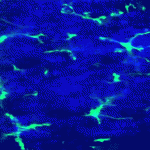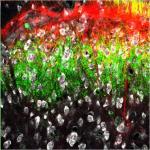Publication Type:
Journal ArticleSource:
J Comp Neurol, Volume 376, Issue 1, p.45-64 (1996)Keywords:
Animals, Calcitonin Gene-Related Peptide, Cats, Electrophysiology, Female, Immunohistochemistry, Lumbosacral Region, Male, Microscopy, Electron, Neurons, Spinal Cord, Staining and Labeling, Substance PAbstract:
<p>A quantitative analysis of substance P (SP)-immunoreactive (IR) terminals contacting physiologically characterized dorsal horn neurons was performed. Three types of neuron were studied: nociceptive specific (NS) from lamina I (n = 3), wide dynamic range (WDR) from laminae II-IV (n = 3), and nonnociceptive (NN) from lamina IV (n = 3). The nociceptive response of focus was a slow, prolonged depolarization to noxious stimuli, because this response was previously shown to be blocked by selective neurokinin-1 (NK-1) receptor antagonists. Ultrastructural immunocytochemistry was used to quantify the relative number of SP-IR boutons apposed to the intracellularly labeled cell per unit of length (density). Densities of the total population (SP immunoreactive+nonimmunoreactive) of apposed boutons were similar in all three regions (cell body, proximal and distal dendrites) for the three functional types of neuron. NS neurons received a significantly higher density of appositions from SP-IR boutons than NN cells in all three regions. However, compared to WDR cells, NS cells possessed a significantly higher density of appositions from SP-IR boutons only in the cell body and proximal dendrites. WDR cells had a higher density of appositions from SP-IR boutons than NN cells, but only in the proximal and distal dendrites. On average, 33.5% of the SP-IR boutons apposed to the cells displayed a synaptic contact. Finally, 30-45% of the SP-IR boutons apposed to the cells colocalized calcitonin gene-related protein (CGRP) immunoreactivity, indicating their primary sensory origin. The data indicate a direct correlation between the amount of SP-IR input and the nociceptive nature of the cells and suggest that SP acts on NK-1 receptors at a short distance from its release site.</p>



